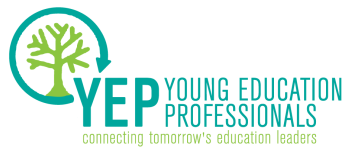School officials in Arkansas also found themselves face-to-face with HIV, though they were anything but inactive. Pea Ridge Public Schools banned three siblings because they’re believed to be HIV positive. The reason, they say, is to prevent other students from contracting the virus. What they don’t know is that banning HIV-positive students from school does not make their peers any less vulnerable to contracting the virus. Unlike a cough or a cold, HIV cannot be transmitted through the air, by touching a door handle, or even by sharing a glass. HIV is transmitted through very specific activities including unprotected sex and intravenous drug use. No one ever contracted HIV by sharing a ruler in math class. If Pea Ridge officials want to guard against the spread of HIV, they should teach students to practice safe sex.
One-quarter of new infections occur in people as young as 13, making HIV a health concern even for middle-schoolers. All D.C. wards are affected, leaving young people (and adults) throughout the District vulnerable to infection (with gay men and African Americans most at risk).
The good news? The rate of new infections in D.C. is falling. Also, D.C. Public Schools received a “B+” in 2012 for its efforts to deal with HIV, as part of DC Appleseed’s annual report card on such efforts in local communities. The school district was recognized for its effectiveness in tackling HIV through the curriculum, teacher education, and outreach with parents. Charter schools in the District earned a “C” because of a perceived lack of commitment to make HIV education a requirement.
If your school community finds itself affected by an HIV diagnosis, how should you handle it? (Hint: Not the Arkansas way.)
- Let the affected person know that they remain a valued and important part of the school community. Mean it.
- Partner with the experts. Metro Teen Aids connects young people living with HIV with appropriate care services and provides HIV testing five days a week. The group works with local organizations to build capacity and offer programs in schools.
- Get informed. Students, staff, and parents’ primary concerns are likely to be “Do I have it?” and “Can I catch it?” Learn about HIV/AIDS prevention, transmission, and treatment and encourage colleagues, parents, and students to do the same, in school and at home.
- Look for HIV-related bullying. Adhere to your school’s anti-bullying policy and put any special measures in place you think are necessary to deal with the stigma of HIV. Creating a climate of tolerance and respect will not only serve the student who has been infected but will make it easier for students who have been exposed to infection to reach out and seek assistance.
Acknowledging the presence of HIV in our communities enables students to take responsibility for their health by preventing new infections and seeking treatment for existing ones. That crucial opportunity for essential self-care may present itself in your classroom. Are you ready?
Wenna Price is an independent education consultant with a background in teaching, teacher training, and curriculum design. Reach her via email or Twitter.

 RSS Feed
RSS Feed